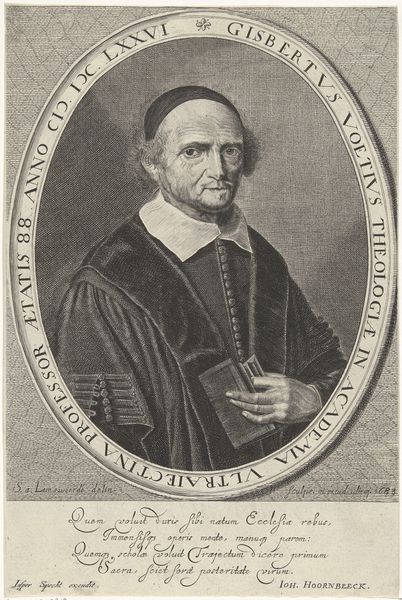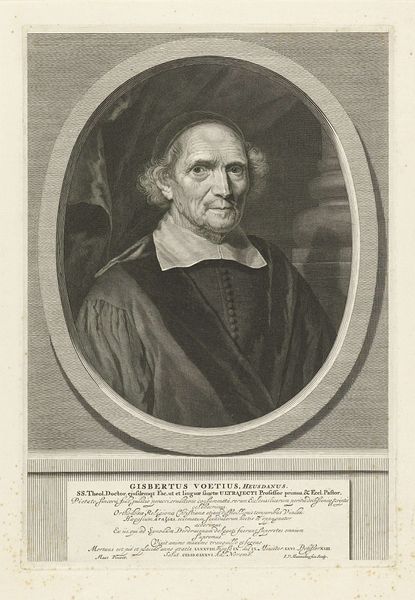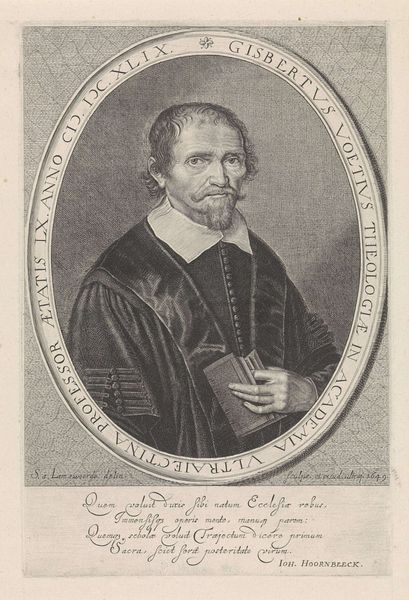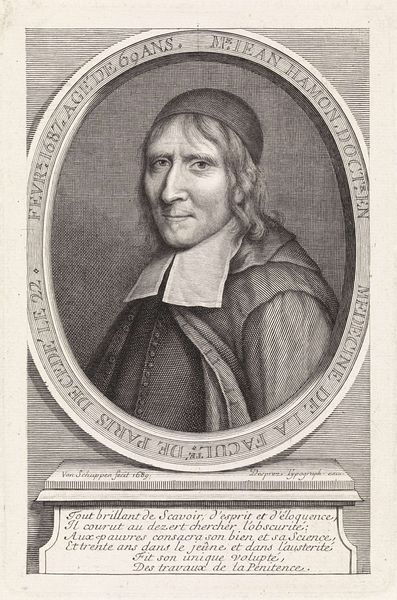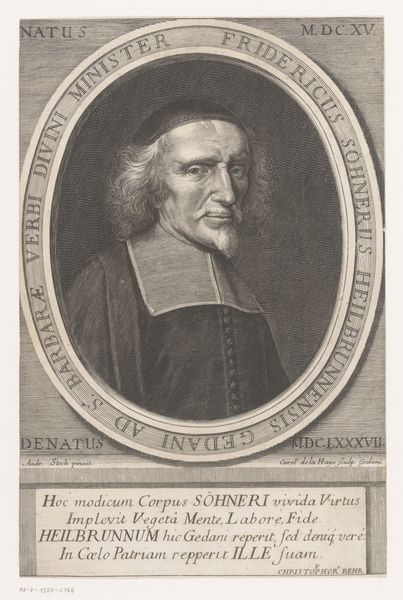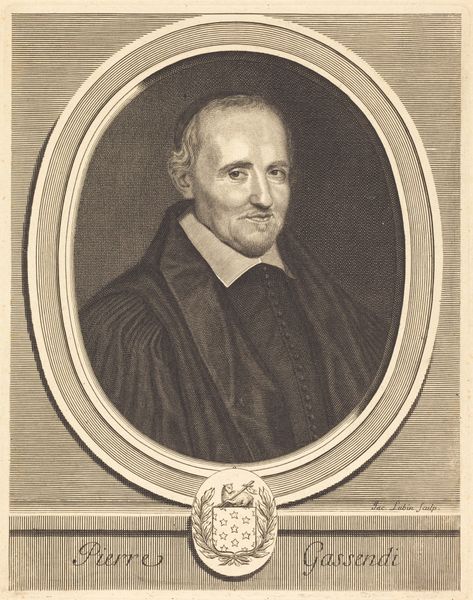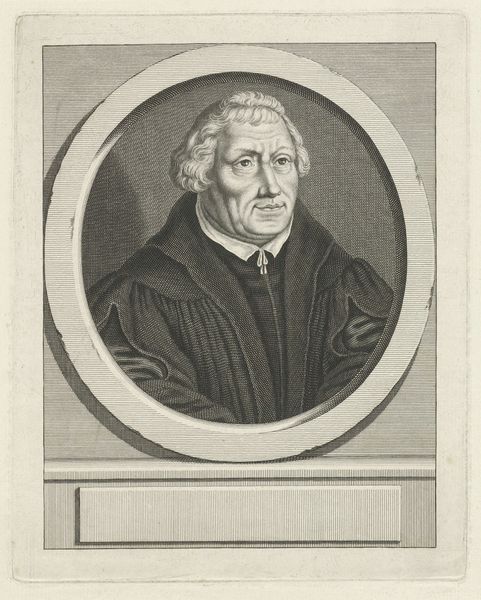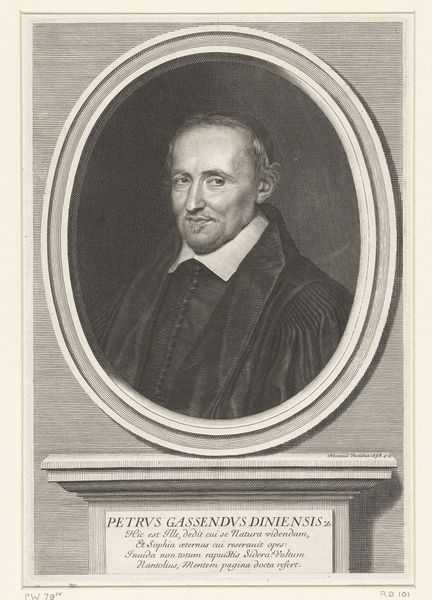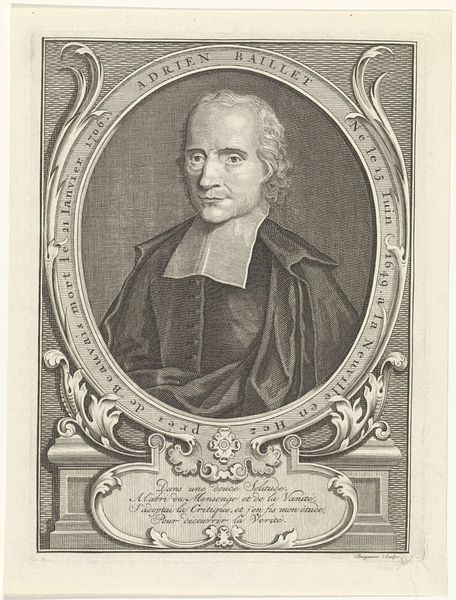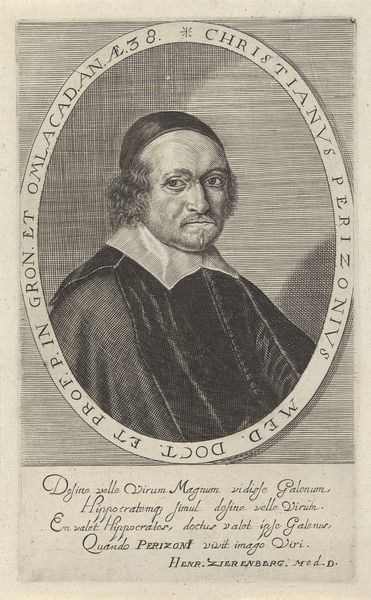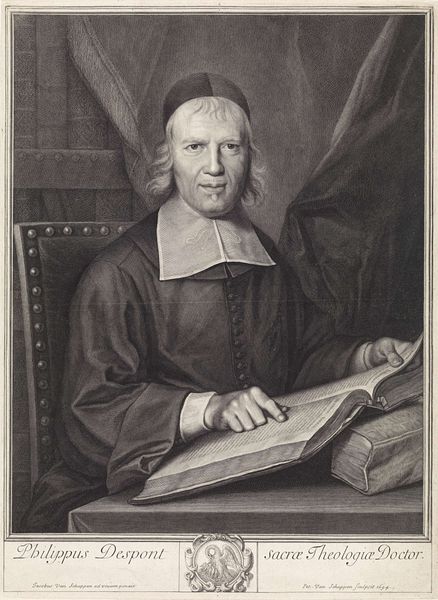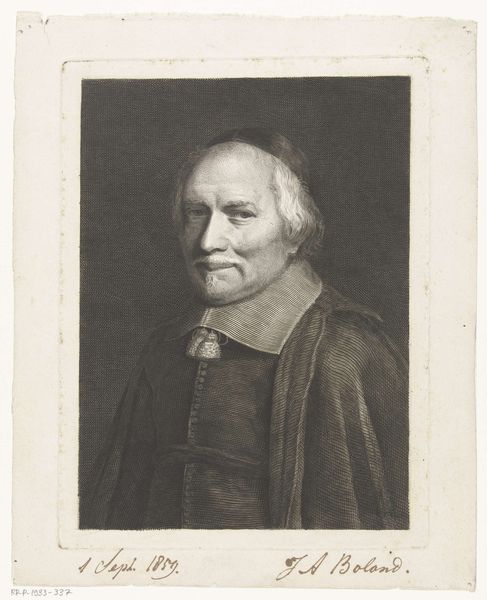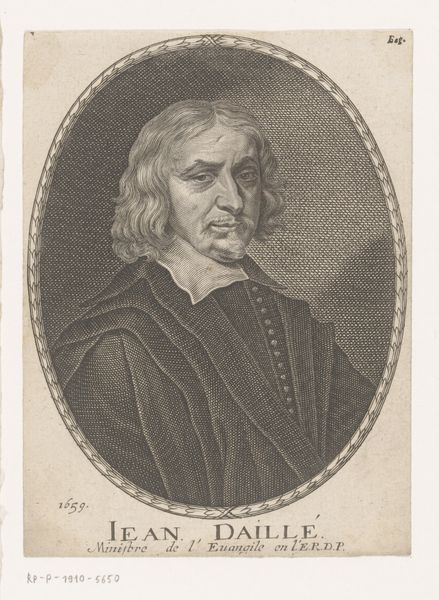
engraving
#
portrait
#
baroque
#
old engraving style
#
engraving
Dimensions: height 275 mm, width 184 mm
Copyright: Rijks Museum: Open Domain
Jonas Suyderhoef created this print of Gijsbert Voet in 1640. The somber attire and the cap indicate Voet's role as a theologian and professor, anchoring him within the religious and intellectual circles of his time. But look closer. The inscription framing his portrait includes the word 'Vultur', or vulture. Why associate this figure with the carrion-eating bird of prey? Consider the vulture's dual symbolism. In some cultures, it represents death and decay, yet in others, it signifies renewal and protection, as it cleanses the earth. This duality echoes in the imagery of sacrifice and redemption found in religious contexts. The inclusion of the vulture hints at the complex interplay between mortality and spiritual transcendence, deeply embedded in the collective psyche. It is this tension—between the corporeal and the divine—that engages us. This symbol resurfaces, evolving through time, inviting contemplation on themes of death, rebirth, and the enduring quest for spiritual understanding.
Comments
No comments
Be the first to comment and join the conversation on the ultimate creative platform.
